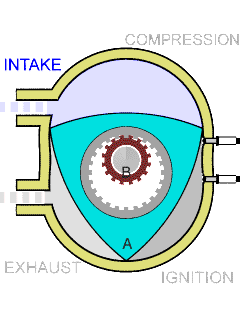Slider-crank mechanism is linkage four bar link mechanism that use in certain type of engines, pumps and some other engineering mechanisms. This is one of the important mechanism in machine dynamics.
The function of a slider crank mechanism
The main function of a slider crank mechanism is conversion of rotational motion into linear motion. The crank and the connection rod is connected using a freely movable , and the connected joint do moves When the wheel start to rotate,
A slider-crank linkage is a four-link mechanism with three revolute joints and one prismatic, or sliding, joint. The rotation of the crank drives the linear movement the slider, or the expansion of gases against a sliding piston in a cylinder can drive the rotation of the crank.
Different types slider crank mechanisms
There are four types of slider crank mechanisms based on the whether the link joints are fixed or permanent.

First Inversion
In first inversion, the joint that connect slider rod to the slider, is fixed.

Second Inversion
In second inversion, the crank is fixed. This is a animated image of a rotary engine. Look how it moves.

Third Inversion
In the third inversion, the connection rod is fixed. So, Oscillating engine mechanism is a third inversion slider crank mechanism.

Forth Inversion
In the forth inversion, the slider is fixed. The hand pump is one of the example for forth inversion mechanisms.

Applications of slider crank mechanism
We can use slider crank mechanism in few different ways. So, there are different type of applications for each of them. Here is a list of most common applications.
- Reciprocating engine
- Rotary engine
- Oscillating engine
- Hand pump
- Scotch yoke
- Oldham’s coupling
- Elliptical Trammel
References
Readings
- Optimal design of compliant mechanisms using functionally graded materials – Scientific Figure on ResearchGate
- Slider-crank linkage


